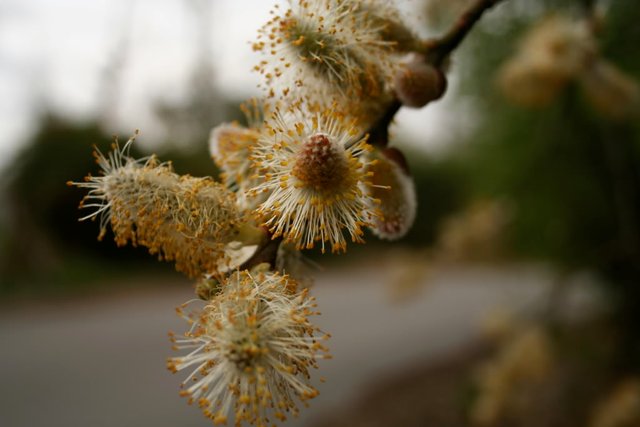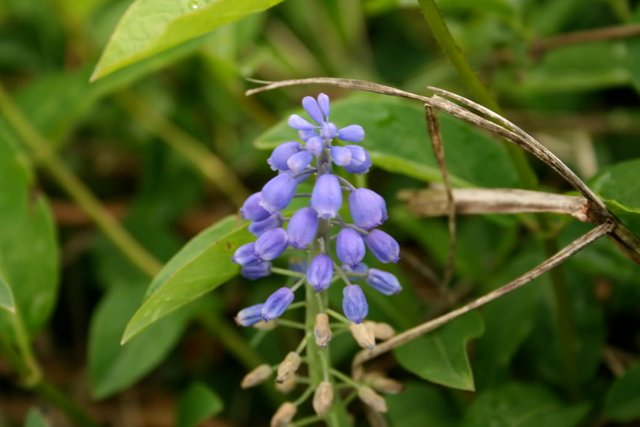An Earthen Hive --Original Writing By therealpaul
A big ball of dirt, completely covered with living flowers.
Through a hole in the top of this earthen spherical hive, thousands of bees flow as if a single whirlpool, flying in and out through a stream of urgent pollen collection, going and constantly returning. The flowers toss with bees, and the air is dense with their busy hum.
Flightless gardener bugs on the great ball's surface live their days, they toil and tend the many flowers-- crawling around on the stems and tunneling through the soil-- fed by the various bits that they can tear or chew from the plants around them.
Resolving any fear of bee stings, a closer look into the sphere's foliage shows a certain symbiosis between the millions of insects and the plants. As the new scale of size comes more into focus, the tiny pastoral scene reveals dirt paths among towering plants and squat little mushrooms curiously growing in circles, and among the many insects, a metal-capped conspiracy beetle, busily pasting a written notice onto the base of a tall pole fungus.
As he secures the poster, a small crowd gathers, and soon heated arguments ensue. While the insects fight, and with an even closer zoom, the message on his notice can be seen in the tiny letters.
"Have you ever tasted HONEY? Have you ever seen it? Is it even real? The bees will let us fight and argue with each other, so that we never think about the fact that there's no actual honey. Shall we argue that too?
We mine the rich minerals from the soil, our green machinery plants extract it with great precision, transmuting those minerals into the golden pollen that those bees so crave. We are often told that the pollen is being turned into honey, and we believe that the reason we work and maintain these plants is to ensure the continuing production of that liquid gold. We are told by tradition that the honey is made for us, but is it?
Who has been inside the hive to examine those facilities? None? And yet we are certain that the day will come when we are allowed to see a droplet, or just catch it's aroma, and perhaps even get a taste of that mythical honey.
Look now! We argue and fight again, but it wasn't the bees who started it, it was I-- a lone conspiracy beetle-- a common bug who replanted the very idea of honey in the first sentence above.
The very idea that we even need honey might be re-sprouted in the mind, but it withers now as we look at it's exposed roots. The pollen lingering just above us is only a bi-product of our existence, and the bees are able to use it, while we might only sneeze at it. Have you tasted raw pollen? Have you any real use for it at all?
Without the dream of future honey thriving in our heads, we might get a glimpse of a different world, where an abundance of wealth is all around, waiting to be formed into anything imaginable. The real treasure here is our existence, here in what we've always known. The bees are our family-- they have their honey, but other bugs don't need honey, when they have an earthen sphere of their own, to live on together for just a few short days.
In further news, our sources tell us that an invasion of real predator insects and birds is expected soon, FYI. If you wish to stay off of the menu for the cheeping bug buffet this week, be sure to subscribe to our newsletter for ways to keep yourself and your family safe during this uncertain time."
Zooming back out from the tiny poster, the tiny argument continues among the bugs, and zooming even further from the flowery buzzing ball, the sun throws a big round shadow on the ground, and a bluebird drops from an overhead power line onto the vast apiary, capturing a small grasshopper out of the flowery surface with it's beak.
--------------
images above by me, taken with Canon Rebel XT
follow me @ @therealpaul


Great post and superb and stunning photos well done @therealpaul!
Thank you, I appreciate the comment.
Brilliant post bliss
Thank you!